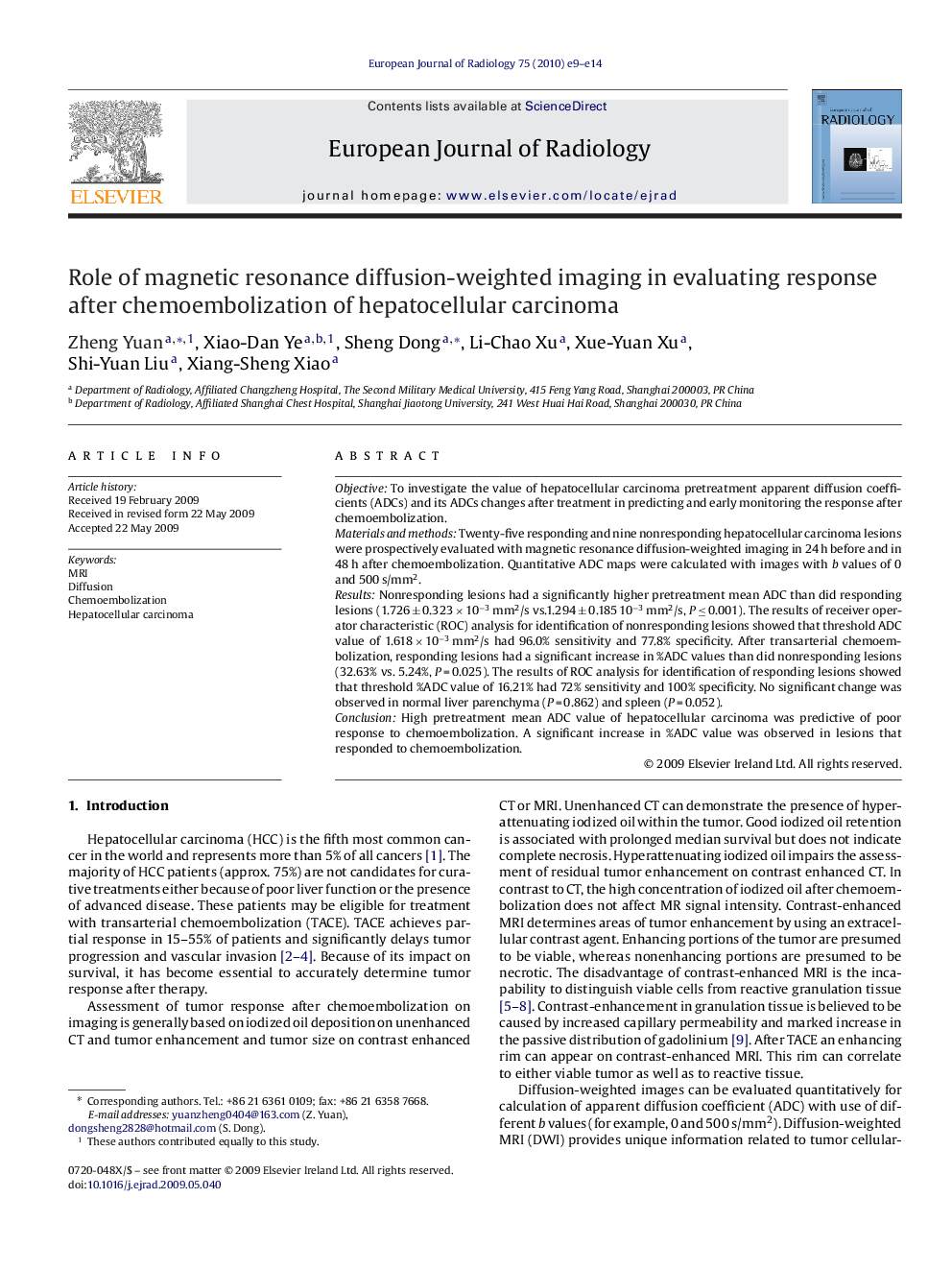| کد مقاله | کد نشریه | سال انتشار | مقاله انگلیسی | نسخه تمام متن |
|---|---|---|---|---|
| 4227154 | 1609813 | 2010 | 6 صفحه PDF | دانلود رایگان |

ObjectiveTo investigate the value of hepatocellular carcinoma pretreatment apparent diffusion coefficients (ADCs) and its ADCs changes after treatment in predicting and early monitoring the response after chemoembolization.Materials and methodsTwenty-five responding and nine nonresponding hepatocellular carcinoma lesions were prospectively evaluated with magnetic resonance diffusion-weighted imaging in 24 h before and in 48 h after chemoembolization. Quantitative ADC maps were calculated with images with b values of 0 and 500 s/mm2.ResultsNonresponding lesions had a significantly higher pretreatment mean ADC than did responding lesions (1.726 ± 0.323 × 10−3 mm2/s vs.1.294 ± 0.185 10−3 mm2/s, P ≤ 0.001). The results of receiver operator characteristic (ROC) analysis for identification of nonresponding lesions showed that threshold ADC value of 1.618 × 10−3 mm2/s had 96.0% sensitivity and 77.8% specificity. After transarterial chemoembolization, responding lesions had a significant increase in %ADC values than did nonresponding lesions (32.63% vs. 5.24%, P = 0.025). The results of ROC analysis for identification of responding lesions showed that threshold %ADC value of 16.21% had 72% sensitivity and 100% specificity. No significant change was observed in normal liver parenchyma (P = 0.862) and spleen (P = 0.052).ConclusionHigh pretreatment mean ADC value of hepatocellular carcinoma was predictive of poor response to chemoembolization. A significant increase in %ADC value was observed in lesions that responded to chemoembolization.
Journal: European Journal of Radiology - Volume 75, Issue 1, July 2010, Pages e9–e14